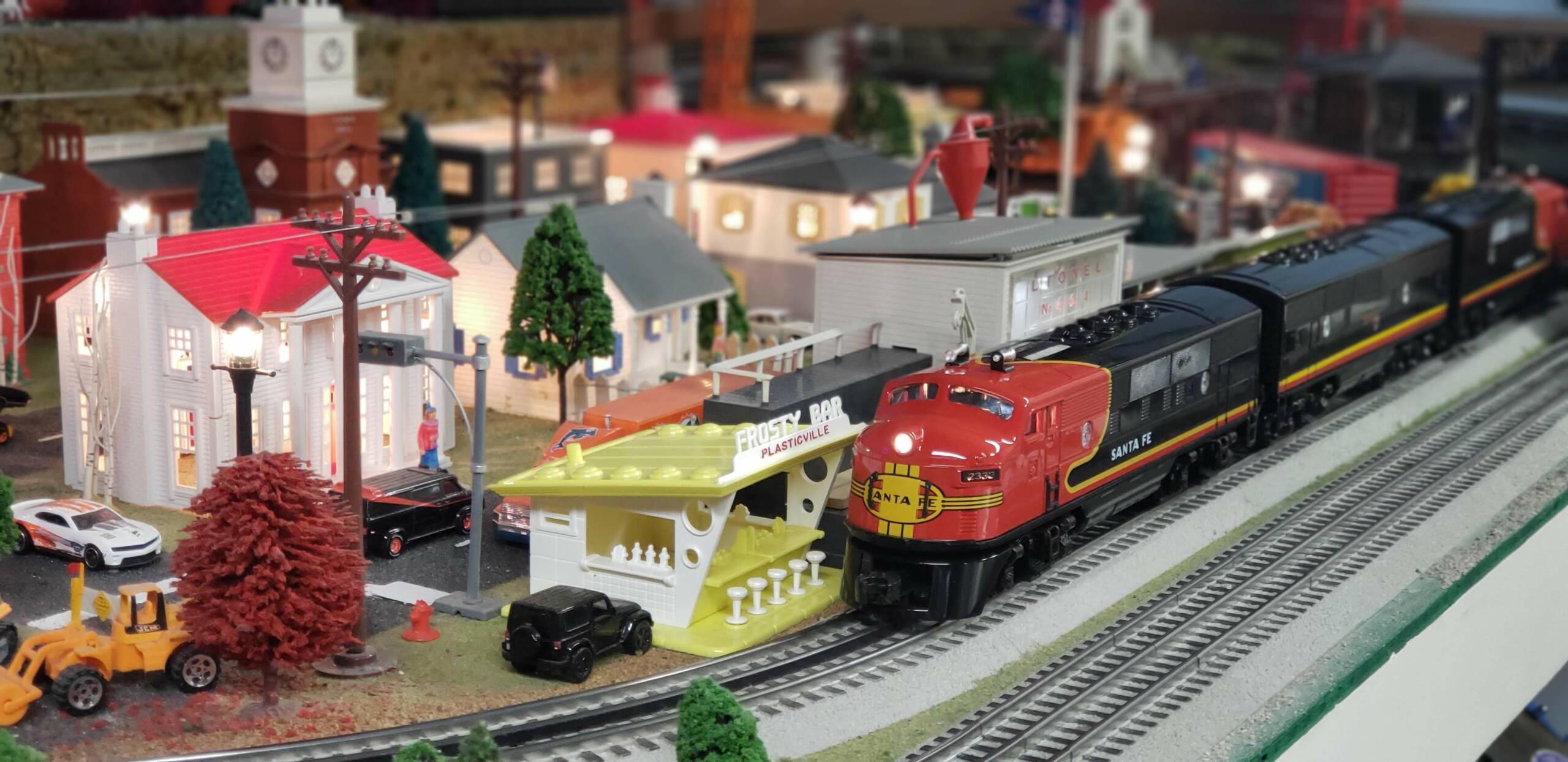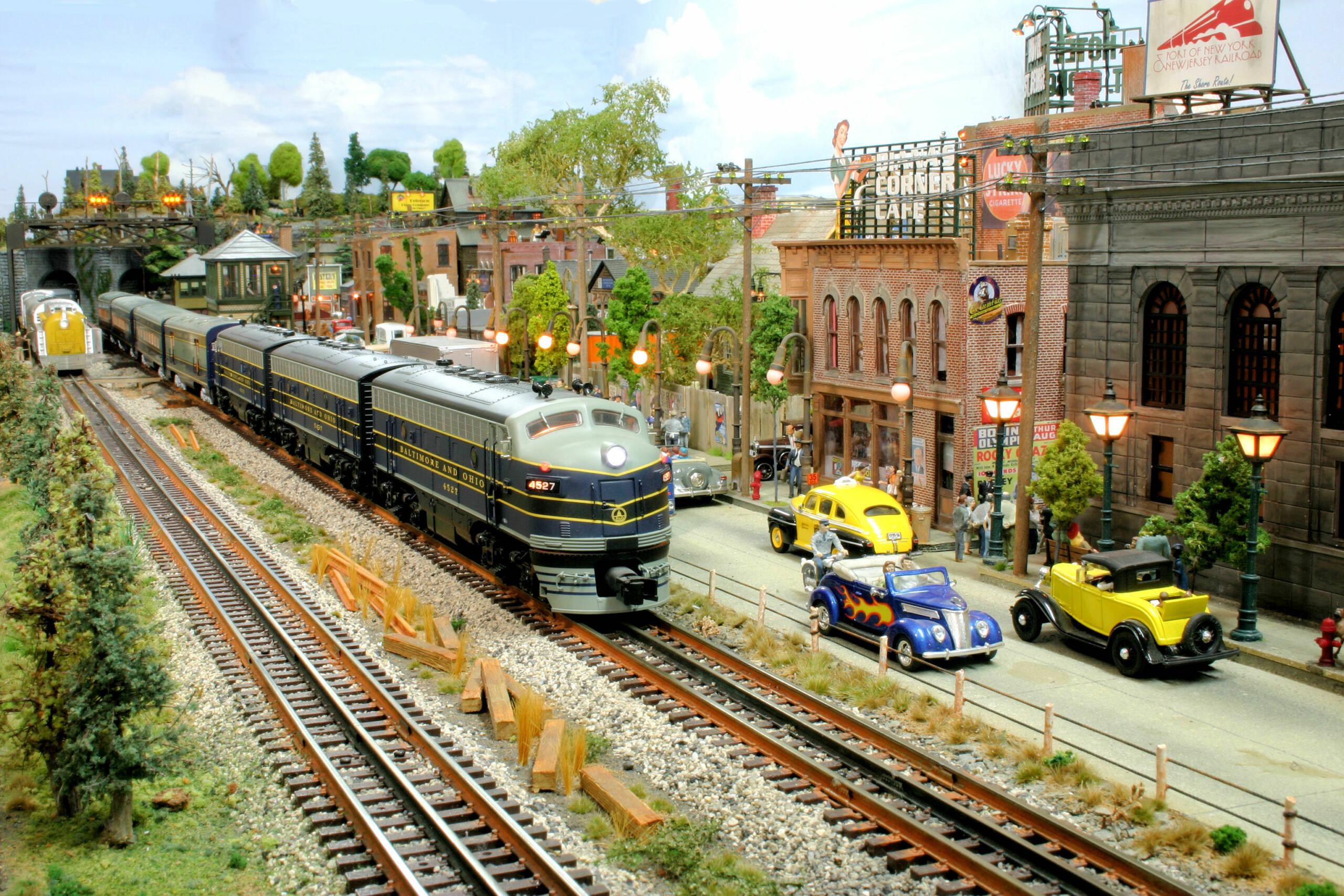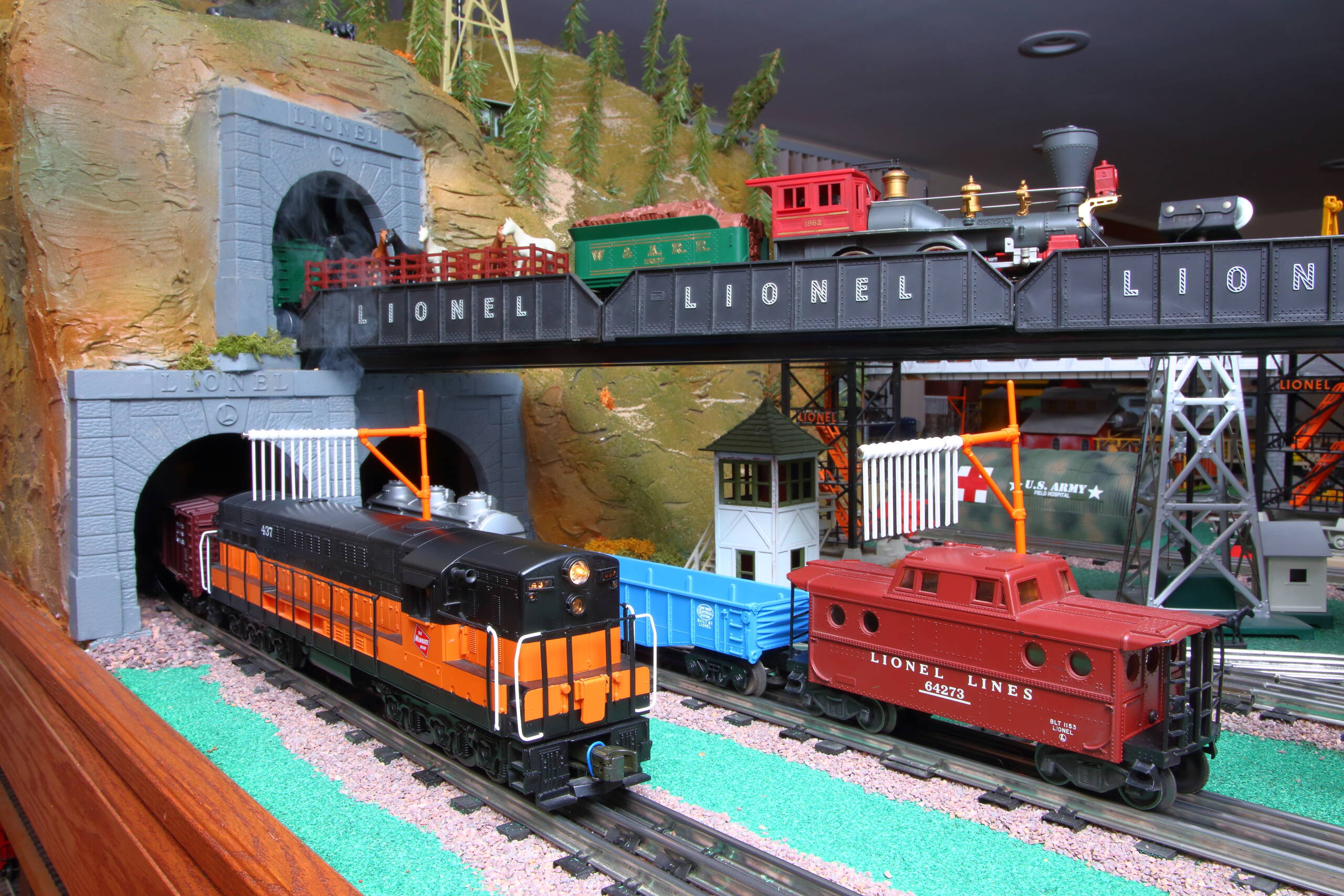Design a toy train layout — O, S, or Standard/Wide gauge — it requires above all making one fundamental decision. Each operator must decide what sort of look he or she wants the layout to have. To be specific, each modeler has to figure out the extent to which the layout, regardless of size or complexity, will strive for toy-like whimsy or scale-like realism. There is no right or wrong answer, merely, what a builder finds most satisfying.
When toy train enthusiasts talk about their layouts and the type and extent of scenery, structures, accessories, and details they have added, they often rely on a couple of popular terms. Hobbyists eager to design a layout with a traditional and fanciful look refer to their model railroad as “toy-rail.” Hobbyists eager to design a layout having a realistic appearance, one that approximates scale dimensions and includes tremendous detail, refer to their model railroad as “hi-rail.” Both approaches are highly respected.
Heritage of toys
When Classic Toy Trains began publication back in 1987, virtually all the layouts editors visited in person and saw in photographs had a toy-like appearance. Those O and S gauge railroads featured many main lines and sidings and a good number of prewar and postwar operating accessories that ranged from oversized signals and crossing gates to big and noisy log and coal loaders, freight stations, passenger terminals, and bridges.
At the same time, those colorful and entertaining displays often featured old track nailed or screwed to bare or green-painted sheets of plywood. There tended to be few if any scenic effects. Impressive mountains, forests, rivers, and other examples of realistic landscaping were seldom found. Instead, the layouts looked much like the ones families and individuals constructed in their attics or basements back in the 1950s and 1960s and exemplified by the O gauge layout built by the Scheil family in the March 2001 issue.

Quite frankly, editors and art directors at CTT weren’t surprised to discover how much contemporary O and S gauge layouts kept alive the toy-like heritage of that niche in the hobby. They expected to see tremendous differences between what toy train fans were building and what dedicated scale modelers embracing HO or N scale were doing.
Attempts at realism
Before many years had passed in the 1990s, Classic Toy Trains was announcing the emergence of a new approach, one dedicated to developing realistic setting in which new as well as vintage O and S gauge trains might be operated. Adherents aware of what had been done in the past discovered their approach had long ago been called hi-rail.
Outstanding builders, including Peter Atonna, Josef Lesser, Herb Lindsay, Brad Nelson, and Stan Trzoniec, were thoughtfully and ingeniously showing how great toy trains looked amid hills, valleys, waterways, and forests designed using the materials and techniques their peers in HO and N scale had adopted. They continued to use classic toy stations and freight loaders on their layouts, but usually dispensed with accessories that were way out of scale. Gigantic watchmen, light towers, and tunnels were dropped.

Many CTT readers took a cue from Stan and his O gauge Delaware & Raritan Valley RR by modifying or even weathering postwar accessories. The inestimable Mr. Trzoniec, who has written several articles for CTT, was honored in Best Toy Trains Layouts, a special-interest publication put out by Classic Toy Trains in the fall of 2019
What distinguished the first generation of hi-rail modelers, especially those in O gauge, was a valiant attempt at balancing whimsical and toy-like elements with realism. After all, O gauge operators had to deal with the fanciful aspect of track that had three rails and might look too shiny and large to approach realism. Their engines and cars came with couplers everyone could see were too big to be considered scale replicas.
Still, hi-railers refused to abandon the O and S gauge trains they loved, often since childhood. They taught a generation how terrific Lionel and American Flyer locomotives and rolling stock could look while traveling alongside creeks and near mountains crafted to seem authentic. They relied as well on a host of scale structures, vehicles, and figures to amplify the realistic feel of their layouts. Hi-railers achieved a beautiful balance.
Better than ever
The first quarter of the 21st century has witnessed among toy train operators a growing commitment to realism, particularly in younger modelers eager to build truly scale landscapes, towns, railroad and industrial centers, and more. They look to Lionel, MTH Electric Trains, Atlas O, and other manufacturers to keep bringing out scale replicas of steam and diesel motive power equipped with sound and lighting effects as well as the components needed to run them via systems of command control.
Among the proponents of hi-rail modeling these days are Richard Battista, Norman Charbonneau, and Neal Schorr, all of whose work has been showcased in Classic Toy Trains. Nascent hi-railers can learn a great deal about how to proceed from the salute to Rich and his layout in the November 2012 issue of Classic Toy Trains.
At the same time, devotees to the toy-rail approach continue to build layouts filled with nostalgia, enjoyment, and tradition. They are responsible in recent years for some of the top holiday displays seen in private homes and public facilities that in turn have broadened interest in the hobby and inspired folks to join the fun. Three neat ones are spotlighted in another CTT special-interest publication: Christmas and Electric Trains.

Special-interest publications created by the editorial and art teams at CTT make it possible for novice and longtime toy train enthusiasts to learn about the finest toy-rail and hi-rail layouts. They offer insights into how those O and S gauge railroads were designed, constructed, and wired and thus provide inspiration for yet another cohort of modelers.
Liked this article? Read “Small O and S gauge layouts have always been part of the hobby” next!














Great Article.
Here’s some old-timer thoughts.
Nearly a century ago Lionel realized that their catalogs looked better when they staged their trains – even the outright toys – in realistic settings.
To be honest, most non-railroad visitors consider even your most detailed, accurate models toys anyway, or at the very least they can’t tell whether your running scale models or RTR toys. But they DO KNOW houses, streams, trees, mountains, etc. So their “suspension of disbelief,” and consequently their enjoyment, is stronger when they see realistic settings for your train, versus seeing very accurate trains on a ping-pong table covered with a grass mat.
I go between scale models and toys depending on who my visitors are, and because my water features, mountains, trees, buildings, etc., look reasonably realistic, non-rail-fan visitors are delighted either way.
Thanks for posting!